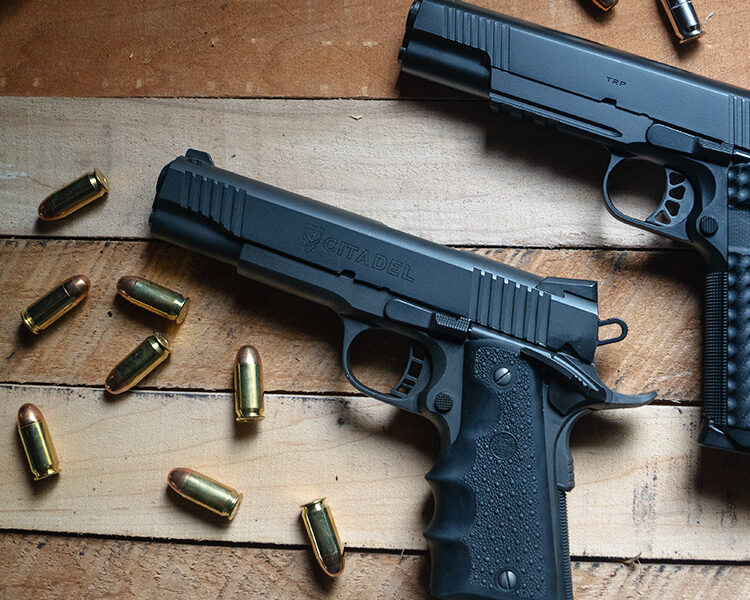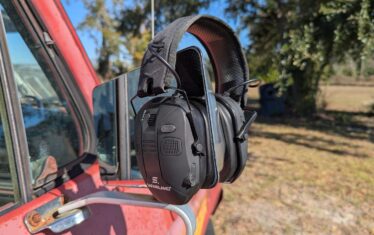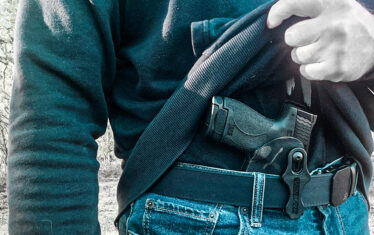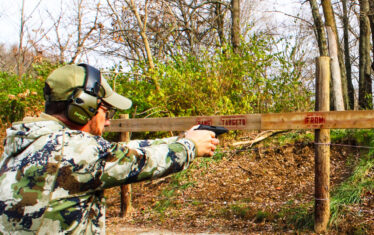There might be no pistol that generates more awe and more ire than the 1911. It survived the trench warfare of World War I, liberated Europe and the Pacific Islands during World War II, and rode on many a peace officer’s duty belt in the following decades. More than a hundred years later, people either love it or hate it.
Some of the disagreement has to stem from the wild discrepancy in what it costs to buy a 1911. You can impulse-buy some for less than $400 while others have a price tag that looks like a mortgage payment. What gives?
I put an entry-level 1911 and a premium 1911 side by side to compare for myself. Both shoot great so I can’t say that either one will make you a sharpshooter overnight, but there are very good reasons to choose one over the other.
1911 History
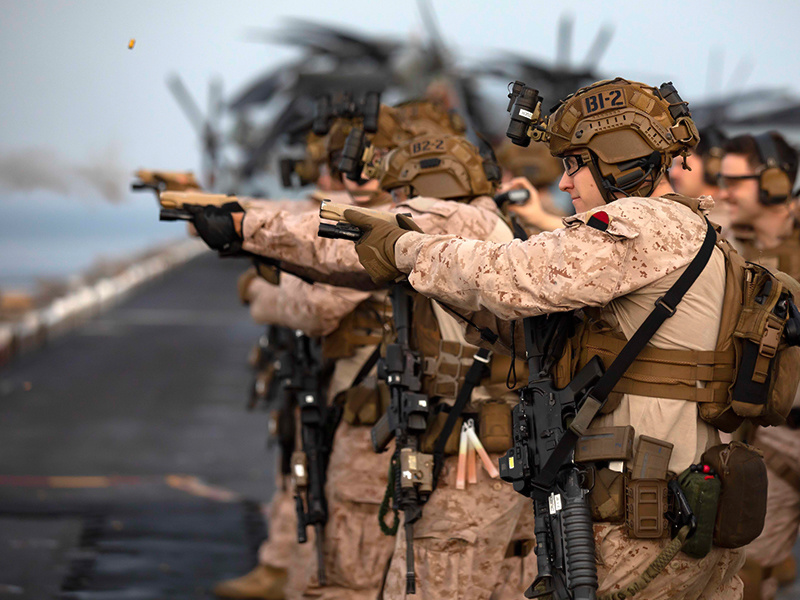
As its name implies, the 1911 traces its roots back more than a century. At the time, the U.S. Army was fielding the M1892 revolver chambered for .38 Long Colt with disastrous results. The revolver was reliable and easy to use, but the underpowered cartridge earned a horrible reputation during combat in Cuba and the Philippines.
The U.S. military responded by presenting firearm designers with a challenge: build a semi-automatic pistol that fires .45 ACP — no more peashooters. After three years of testing, the Colt 1911 won the Army’s business by firing 6,000 rounds without cleaning or suffering from a single malfunction.
For the next seven decades, the 1911 served as America’s sidearm. It created a cult-like following with solid performances in World War I, World War II, Korea, and Vietnam. Police departments and civilians bought the 1911 in huge numbers, too, and it became a favorite of competitive shooters and average citizens alike.
The 1911’s reign as the official service pistol of the U.S. military came to an end in 1985 when the Beretta M9 replaced it. That didn’t affect the 1911’s public appeal, though, and John Browning’s design has continued to gain followers who appreciate nostalgia, craftsmanship, and the thrill of punching .45-caliber holes in targets.
Why You Should Buy A Cheap 1911
You can still buy a bargain-basement 1911 for as little as $350. The design has been public domain for decades so even low-cost manufacturers can get in on the action. At that price, you’re going to have to make some compromises. This old Citadel M-1911 (now priced at around $500) is a good example of what the value-conscious buyer can expect.
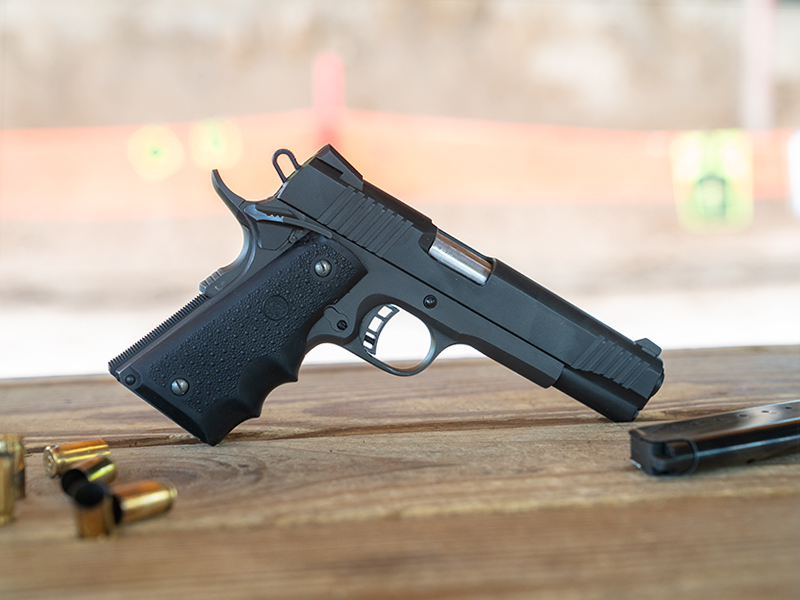
Construction
To keep costs down, the slide and frame are cast — a manufacturing technique where melted steel is poured into a mold. This method of production is inexpensive but prone to long-term structural flaws like cracking due to inconsistencies in the steel.
Components are mass-produced so quality, fit, and performance vary from pistol to pistol.
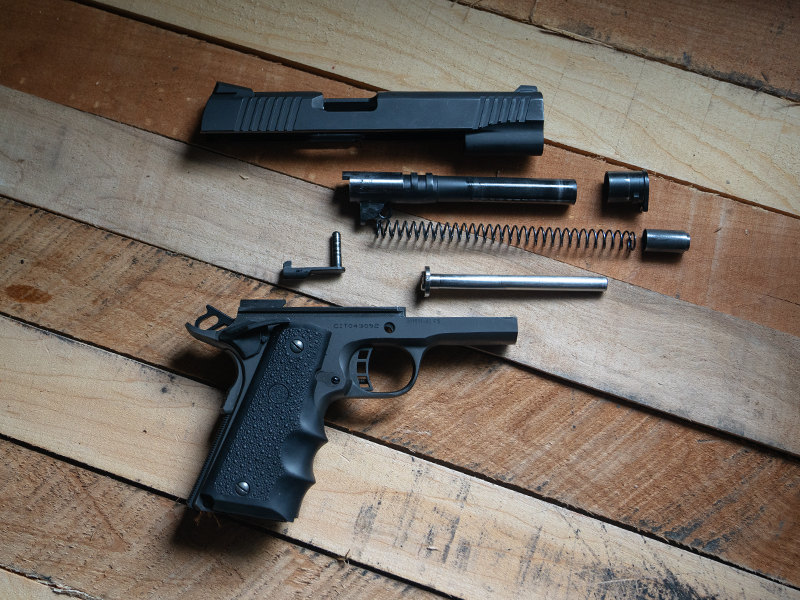
Sights
The Citadel’s iron sights get the job done and cost almost nothing to produce. The front sight is chunky compared to the blade sight on old military pistols; that makes it faster for your eye to pick it up at the potential cost of some precision. These are fine for shooting in the middle of the day but struggle in low light.
Ergonomics
Since the shape of the 1911 hasn’t changed in more than 120 years, the natural-feeling grip angle is the same regardless of how much you spend. This also means that 1911 magazines are interchangeable.
I replaced the relatively smooth softwood grip scales with a Hogue grip for better control on this pistol. As with almost all 1911 components, there are loads of drop-in upgrades available. All I needed for this was a screwdriver.
The 1911 is a single-action pistol, meaning the trigger’s only function is to release the hammer. It doesn’t have to cock the hammer or operate a striker, so it’s inherently crisp with a short pull and reset. Even this entry-level 1911 has a trigger feel that would be noteworthy in the striker-fire world.
Perks and Modern Features
Since this 1911 is largely true to the original, there isn’t much to speak of in terms of factory upgrades.
One deviation from historical examples is the full-length guide rod. This makes cycling the action smoother, offers more controlled recoil spring compression, and simplifies disassembly. Beyond that, practical benefits are limited on .45-caliber pistols.
The cocking serrations on the slide help with racking and press-checking but they’re sharp and unrefined. Every time I wipe this pistol down I find fibers that have been torn from my cleaning cloth all over these serrations.
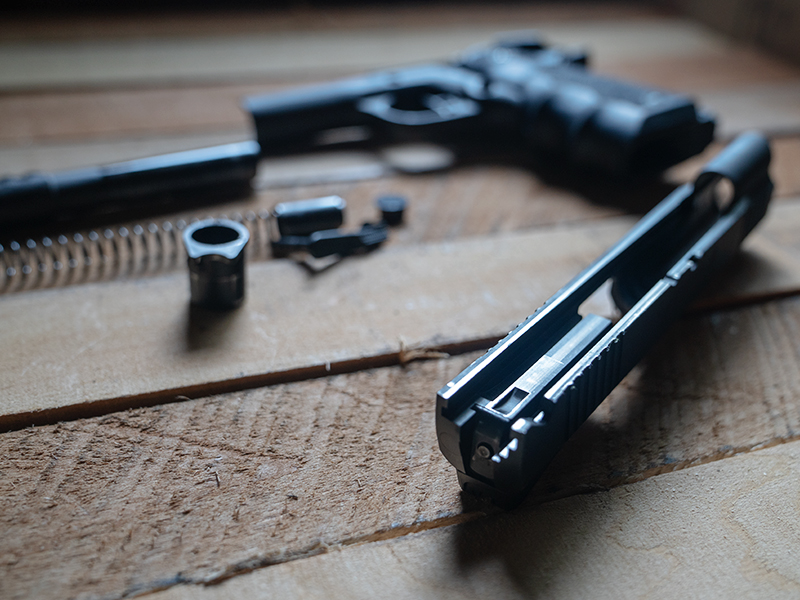
According to 1911 lore, service members used to shake their pistols to listen for a desirable rattle. Supposedly, they believed that looser tolerances indicated a more reliable pistol. Your bargain-basement 1911 may or may not rattle due to variations in the manufacturing process. This one is fairly snug.
Bottom Line
People who look down on cheap 1911s are missing the point. This is actually the closest you can get to the pistols that won two world wars; they’re exactly what built the design’s legendary reputation. You don’t think the military handed out collector-grade sidearms to rank-and-file troops, do you?
Buying a cheap 1911 is a good way to dip your toe into the expensive world of steel-framed pistols. They’re powerful and fun to shoot, and they make decent platforms for customization. Best of all, you won’t have to be precious with one. You can strap it to your hip and go hunting or camping in the backcountry without worrying about ruining its resale value.
Why You Should Buy An Expensive 1911
So, if a cheap 1911 is reliable and accurate, why would anyone pay thousands for a premium 1911? In short, they’re excellent. We’ll use the Springfield 1911 TRP as a basis for comparison.
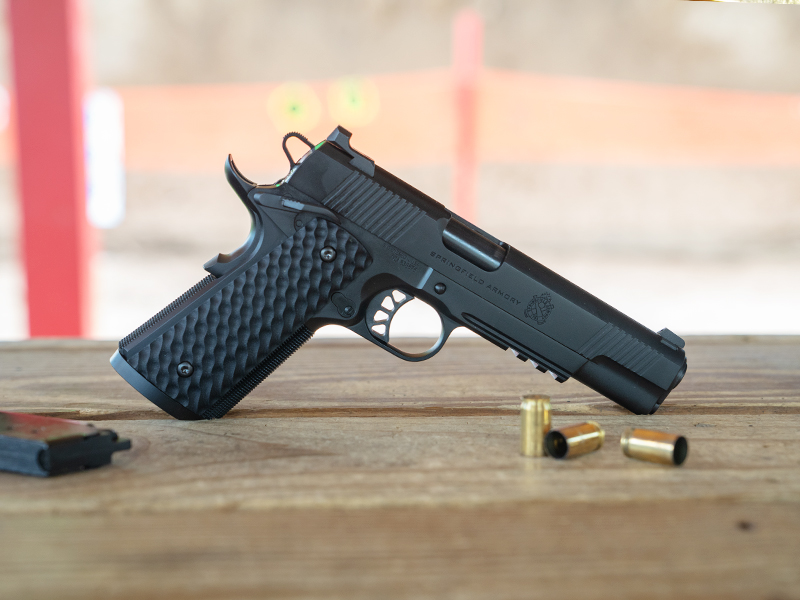
Construction
Unlike the Citadel, the TRP has a forged steel frame, slide, and match-grade barrel. That means the metal was heated but remained in its solid form while it was hammered into shape. This maintains the steel’s natural grain, removes internal defects, and makes the steel more dense. All of that creates a pistol that’s much stronger than any made from cast metal.
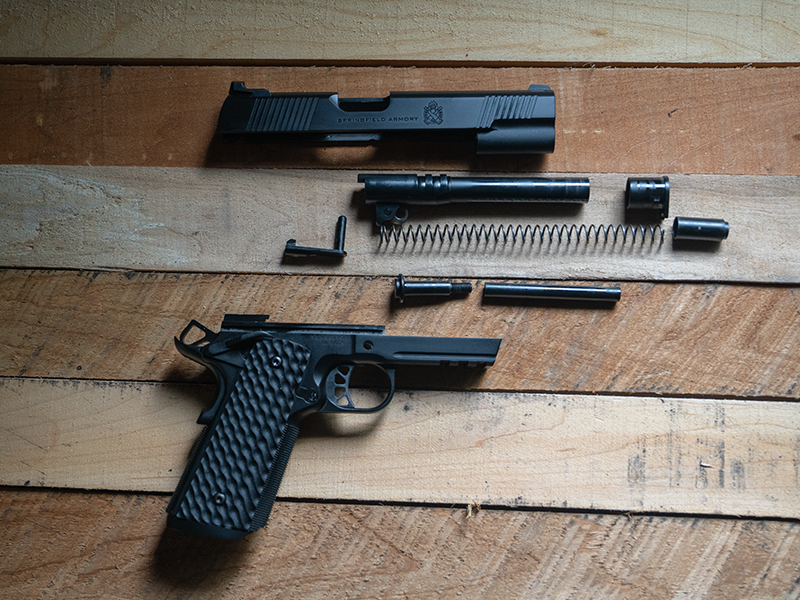
Sights
The iron sights on the TRP have inserts that make them more visible in all lighting conditions so you can get on target faster. These use tritium, a substance that naturally glows and doesn’t need to be exposed to a light source to charge. If you aren’t going to run a red dot on your pistol, tritium is the next best thing.
Ergonomics
While the grip angle of the TRP is the same as any 1911, the scales are a big departure from carved wood. The Hydra grips from VZ Grips are extremely aggressive because they’re designed for kinetic environments where shooters need gloves. They feel like they might take a bite out of your palm, but I can’t help but love the way they tame the TRP’s .45 ACP recoil.
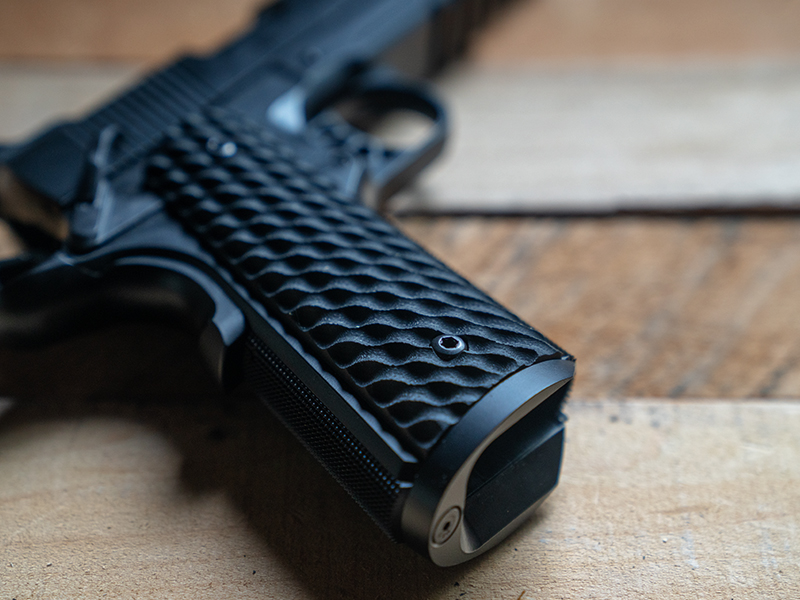
Any 1911 trigger is bound to be good, but the TRP’s Gen 2 Speed Trigger is exceptional. After minimal pre-travel, it hits a hard and audible wall. Apply a slight bit of pressure to get the most satisfying mechanical click you’ve ever heard. The break is match-rifle-crisp with an almost imperceptible amount of movement. Reset is nearly instant.
Perks and Modern Features
Like the humble Citadel, Springfield’s borderline custom TRP features a skeletonized hammer and cocking serrations on the slide. They check the same box, but the TRP gets a whole different level of attention so every edge is smoothed to perfection.
To aid in speed reloads, the TRP gets a bolt-on flared magazine well. The frame’s accessory rail lets you add a weapon light, which is a huge advantage for any tactical pistol.
When it’s time to disassemble the TRP, you’ll notice that the full-length guide rod is actually two pieces. The outer portion unscrews with a hex wrench before you can remove the spring and break down the pistol like any other 1911.
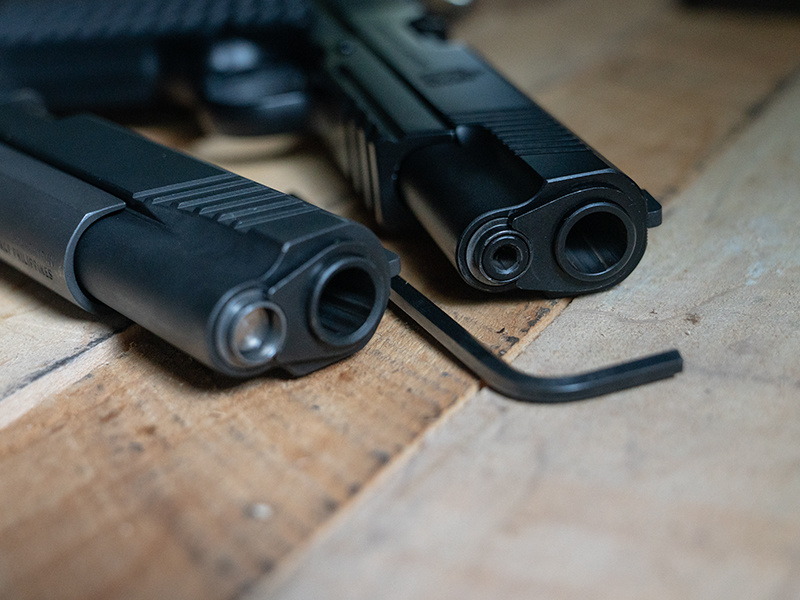
Above all of this, though, is the way Springfield builds the TRP. The pistol is made in the U.S. using high-end materials and tight tolerances (this is one 1911 that doesn’t make a peep when you shake it) but that’s just the beginning.
Each frame and slide are fitted by hand to achieve the best fit possible. Then, mating surfaces are polished to minimize drag. The frame, slide, and barrel are numbered by hand to create a matching set. Racking this pistol doesn’t feel like anything else.
Bottom Line
The TRP is a fine piece of craftsmanship but it’s not all show and no go. The model began life as the Tactical Response Pistol that Springfield Armory built for the FBI’s Hostage Rescue Team in 1996. It’s a fighting gun, through and through. If you want a high-end 1911 that rocks as hard as a modern striker-fire gun and looks good enough to put in a display case, this is the one to buy.
Which 1911 Is Best?
The short answer is to buy a cheap 1911 and an expensive one. Maybe buy a third so you can train with .22 LR for five cents a round. If you’re going to choose just one, it comes down to how you’ll use it. In most cases, the price of your 1911 will not be what’s holding your shooting back.
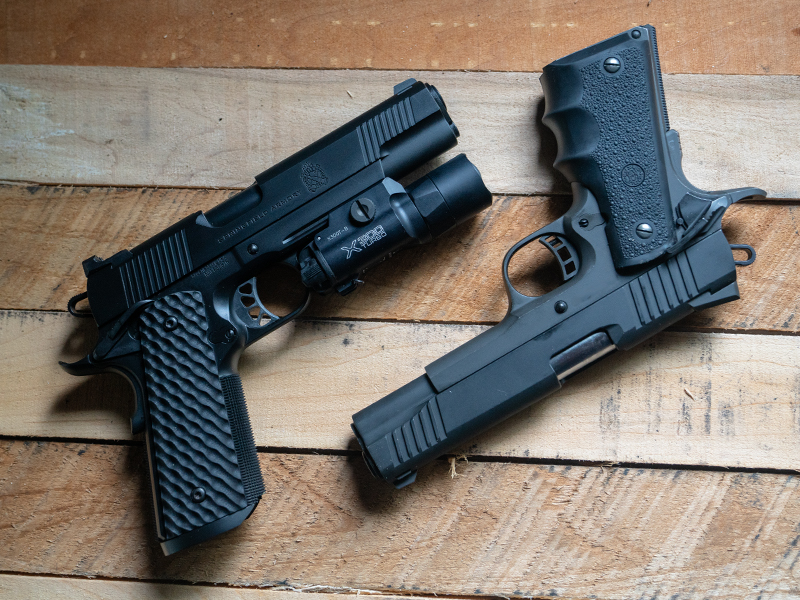
A 1911 can be a great workhorse pistol. Weight aside, it’s nice to have a .45-caliber insurance policy against bears and mountain lions, and eight-round magazines are a lot less of an issue in that kind of situation than they are in a home defense or duty capacity. A cheap 1911 will handle this job just fine and there’s no need to abuse a high-end pistol trekking through the brush.
If you can afford a premium 1911 like the TRP, by all means, buy one. There’s nothing like the impeccable craftsmanship and attention to detail you get from that kind of pistol. I promise it will reset your bar for what a trigger should feel like, and the fit and finish are top-notch. Find an appropriate competition class and use it for pistol matches, keyhole shots at the range, keep it by the nightstand if you want, and make your friends jealous.
Just don’t blame me if it ruins every other pistol for you.
1911 Accessories
The 1911 market has had more than 120 years to cultivate aftermarket support, so there’s no shortage of ways to modify, customize, and upgrade yours. Notice that a premium pistol like the TRP has many of these features right out of the box.
Holsters
Pistols are for carrying so you’re going to need a holster. The first Safariland holster I bought was a 7TS that I still use. It’s a great fit and I appreciate the balance of speed and security I get from Level I retention.
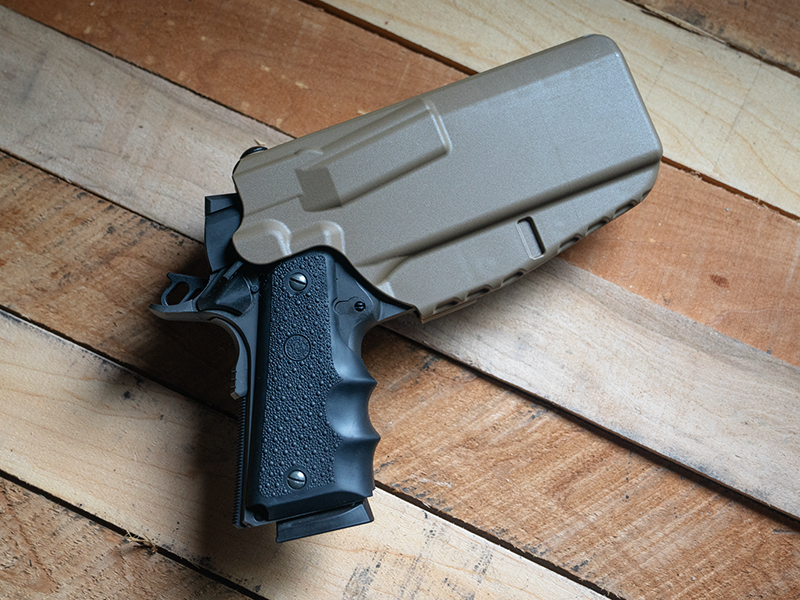
If you want to keep things old school, there are leather options available, too. I’d advise against using a 1911 as a CCW pistol because of the weight and limited capacity, so you can probably skip shopping for an IWB holster.
Grips
The easiest thing to do is upgrade the grips. If you have an entry-level 1911, swapping out cheap wooden grips for hardwood, synthetic, or rubber grips is as easy as turning four screws. You can’t mess it up. VZ Grips and Hogue are two of my favorites.
Weapon Lights
Not all 1911 variations come with an accessory rail. If yours has one, you can easily mount a weapon light. These are extremely helpful on home-defense pistols. Check out the Surefire X300 and Streamlight TLR-1.

Sights
The odds are good that whichever 1911 you buy will come with plain iron sights. You (or a gunsmith) can replace these with upgraded sights like the ones on the Springfield Armory TRP. XS Sights makes a bunch of great sights for the 1911 platform right here in the U.S.
Custom Gunsmithing
If you really want to get the most out of your 1911, get in touch with a reputable gunsmith. Their services won’t be cheap but they will be able to squeeze extra performance out of your 1911, especially if it’s on the more affordable end of the spectrum.





